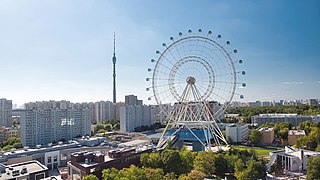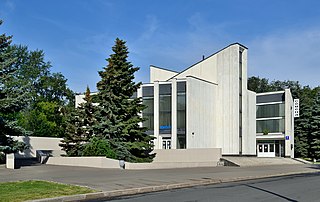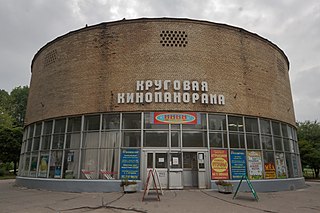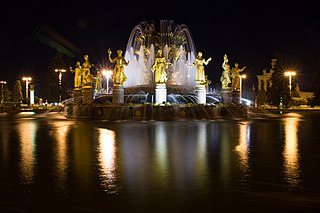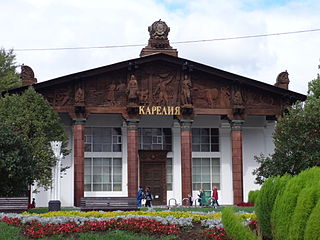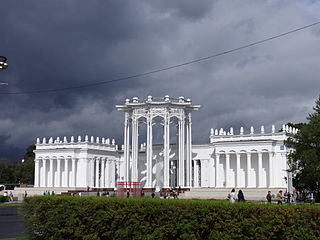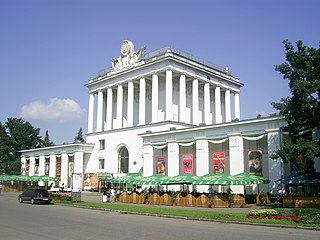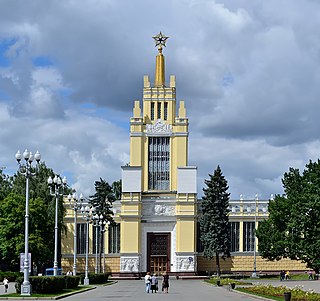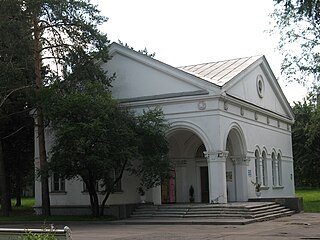Self-guided Sightseeing Tour #10 in Moscow, Russia
Legend
Guided Free Walking Tours
Book free guided walking tours in Moscow.
Guided Sightseeing Tours
Book guided sightseeing tours and activities in Moscow.
Tour Facts
2.9 km
35 m
Experience Moscow in Russia in a whole new way with our free self-guided sightseeing tour. This site not only offers you practical information and insider tips, but also a rich variety of activities and sights you shouldn't miss. Whether you love art and culture, want to explore historical sites or simply want to experience the vibrant atmosphere of a lively city - you'll find everything you need for your personal adventure here.
Activities in MoscowIndividual Sights in MoscowSight 1: Солнце Москвы
The Sun of Moscow is a panoramic wheel in VDNKh park, Moscow, Russia. It was constructed in 2022 as a replacement for previously dismantled Moscow-850. At 140 m high minus the height of the elevated platform, it became the tallest Ferris wheel in Russia and in Europe, surpassing London Eye in raw height, while still smaller in diameter. The wheel opened on the City Day 11 September 2022, when Moscow's 875th anniversary was celebrated.
Wikipedia: Sun of Moscow (EN), Website, Telegram, Vk, Website
Sight 2: Pavilion № 7, Souyzmulfilm
The Seeds Pavilion is the seventh pavilion of VDNH, built in 1978. Since 2021, it has been the Soyuzmultpark multimedia center.
Wikipedia: Павильон № 7 «Семена» на ВДНХ (RU), Website, Telegram, Vk
Sight 3: Circular Kinopanorama
The Krugovaya Kinopanorama or Circular Kinopanorama - is a cinema in Moscow of Russia which plays Krugorama, a type of cinema presentation in which film is projected on a circular screen with a horizontal 360° view. This was pioneered in 1896 by French engineer Raoul Grimoin-Sanson, who played ten projectors simultaneously on a circular screen, a process he called Cinéorama. Cinerama though spelled similarly has a different meaning, and denotes three projectors on an arched screen, as does Kinopanorama. The technology used in the Moscow Circular Kinopanorama was also previously carried out by Walt Disney in 1955, in a process he called Circarama.
Sight 4: People's Friendship Fountain
The Druzhba Rodov fountain is the main fountain and one of the main symbols of VDNH. It was created for the opening of VDNKh in 1954 according to the project of Konstantin Topuridze and Grigory Konstantinovsky. It is located on the Central Alley, on the Friendship of Peoples Square, next to the Main Pavilion. The fountain has been closed for restoration since the beginning of autumn 2018, reopened in April 2019.
Sight 5: Pavilion № 67, Printing
The Karelia Pavilion is a building built in 1954 as the Karelian-Finnish SSR Pavilion for the exposition of the achievements of the KFSSR at the All-Union Agricultural Exhibition.
Sight 6: Pavilion № 66, Culture
The Culture Pavilion is the 66th pavilion of VDNH, built in 1954 as the Uzbek SSR Pavilion. It received the name "Culture" in 1964.
Sight 7: Pavilion №64, Optics
Pavilion No 64 Optics is one of the pavilions of VDNH.
Sight 8: Pavilion № 59, Grain
Pavilion No. 59 "Grain" - one of the pavilions of VDNH.
Sight 9: Московский музей анимации
The Moscow Animation Museum is the first international animation museum in Russia, opened in 2006 by the staff of the Soyuzmultfilm film studio. The collection of exhibits is associated with the history of the development of animation and animation in Russia and abroad. Currently, the main exposition is located on the territory of the Izmailovo Kremlin, and the museum also owns the pavilion of VDNH "House of Culture", closed for repairs until 2018. The founder is the animator Leonid Aronovich Shvartsman. The director of the museum is Larisa Evgenievna Vyborgova.
Sight 10: Pavilion № 70 Moscow
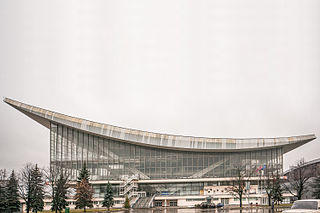
The Moscow Pavilion was designed as an exhibition pavilion for the Soviet Union at the international exhibition Expo 67 in Montreal, Quebec, Canada. The project was designed by a team of architects led by Mikhail Posokhin. Since the 1990s, the pavilion has been commonly called the Moscow Pavilion.
Share
How likely are you to recommend us?
Disclaimer Please be aware of your surroundings and do not enter private property. We are not liable for any damages that occur during the tours.
GPX-Download For navigation apps and GPS devices you can download the tour as a GPX file.
